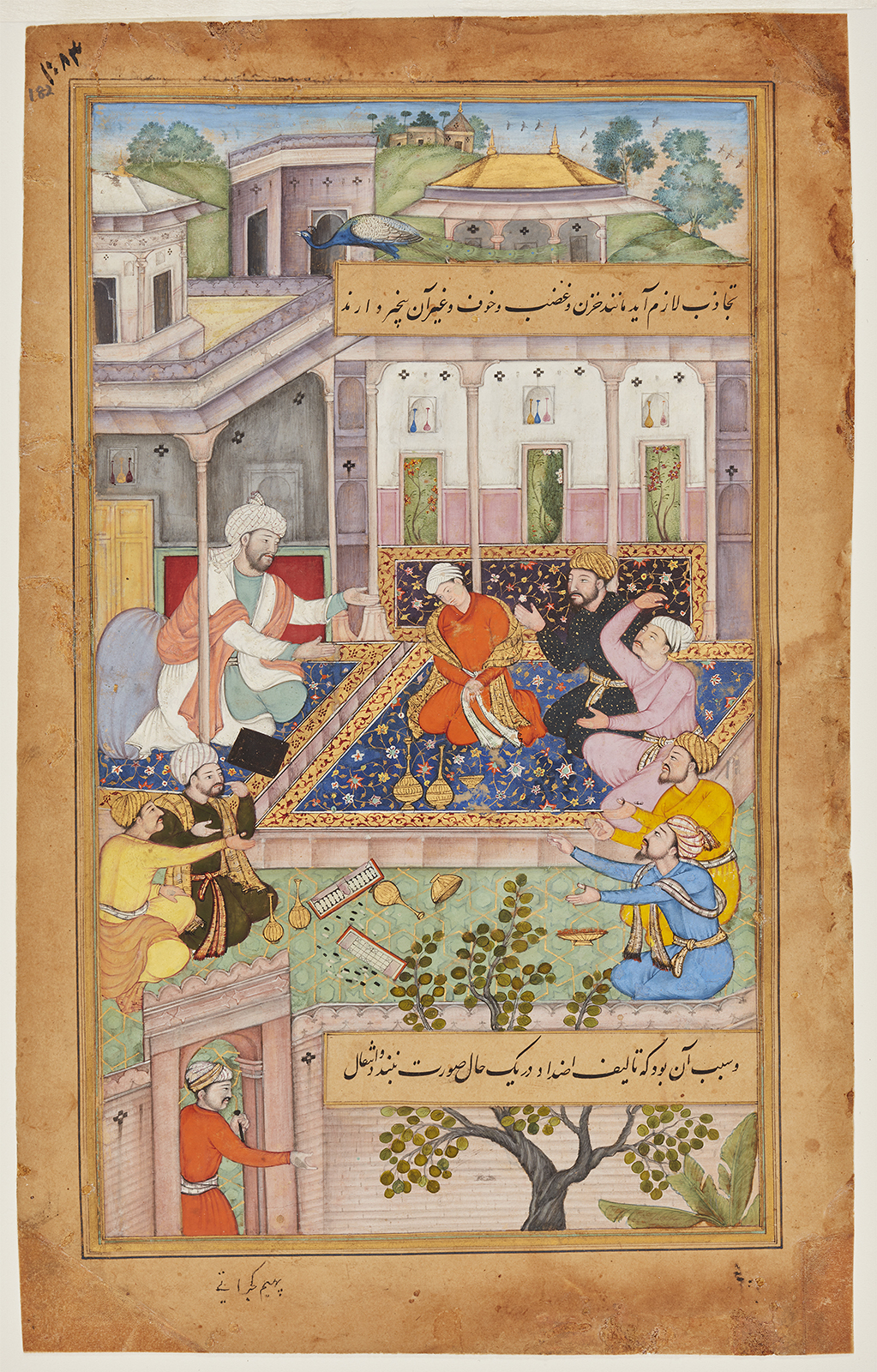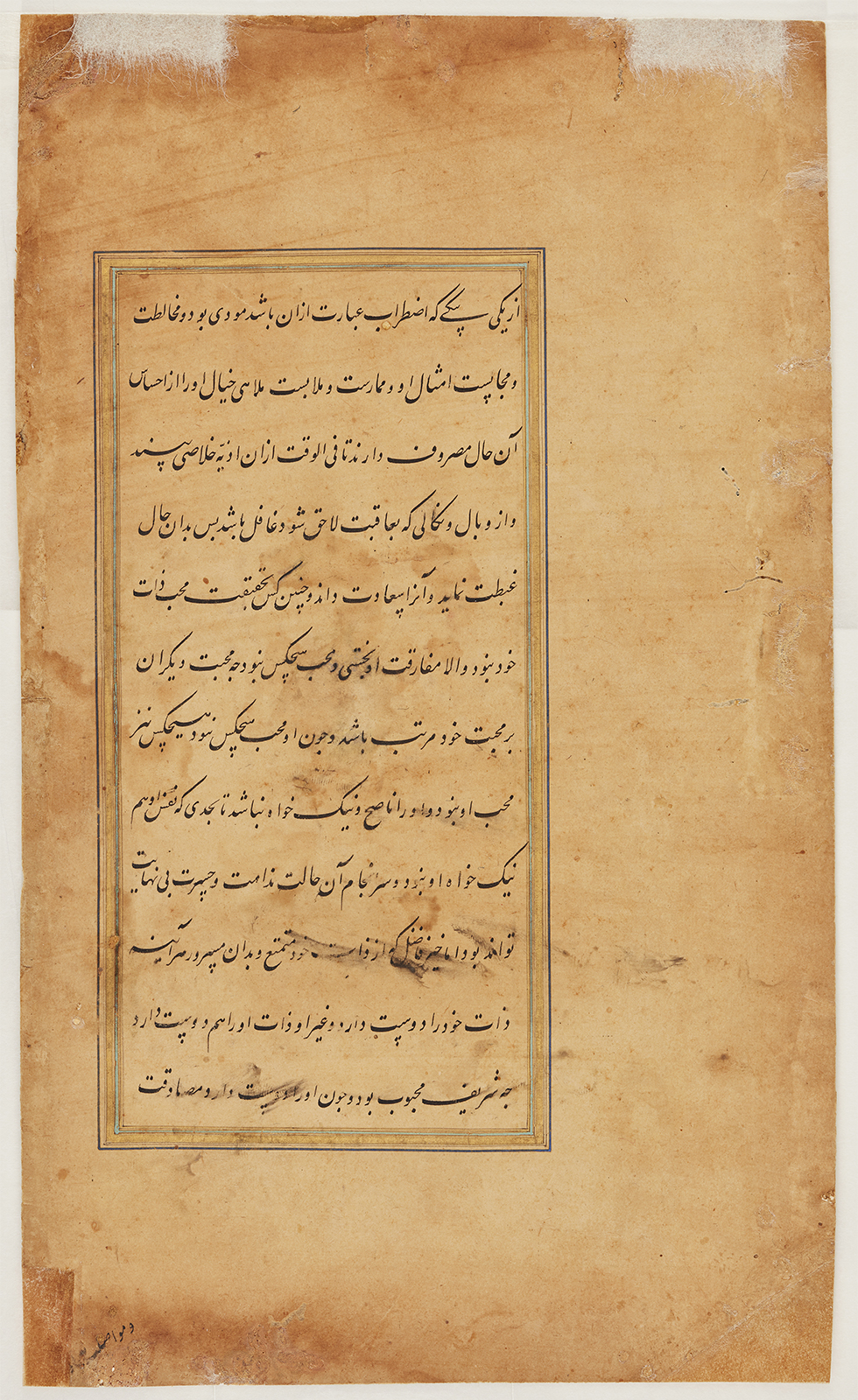Click on the image to zoom
The Man Strays from His Course, Folio from a manuscript of the Ethics of Nasir (Akhlaq-i Nasiri)
- Accession Number:AKM288.11
- Creator:Artist (painter attributed): Pahim Gujarati
Author: Nasir al-Din Tusi, Persian, 1201 - 1274
Created for: Nasir al-Din `Abd al-Rahim - Place:Pakistan, Lahore
- Dimensions:23.9 cm × 14.2 cm
- Date:ca. 1590-1595
- Materials and Technique:Opaque watercolour, ink and gold on paper
In this part of the Third Discourse, Nasir al-Din Tusi talks about a man who distracts himself from the ‘perturbation of his soul’ with games and other pleasures; while he imagines that he is happy, in fact he is simply avoiding his problems. This painting might show the moment the man realizes he has been deceiving himself—the backgammon board has been overturned and the companions of the distraught-looking man respond in surprise.
See AKM288 for an introduction to a manuscript of the Ethics of Nasir (Akhlaq-i Nasiri) and links to the other paintings within this manuscript.
— Marika Sardar
Note: This online resource is reviewed and updated on an ongoing basis. We are committed to improving this information and will revise and update knowledge about this object as it becomes available.




